The culturally rich region of Sham is associated with the ‘Second Diffusion of Buddhism’, a Buddhist renaissance that swept Ladakh in the 11th Century AD. It is home to some of the oldest standing structures in the region, including the oldest monastery in Ladakh, breath-taking castles of the Namgyal dynasty and dramatic landscapes that would wow you with their beauty.
We had visited Lamayuru during our earlier trip to Kashmir and Ladakh in 2015. However, some other places still required more exploring. Deciding to start our Ladakh trip on a soft note, we went on a half-day excursion towards the West of the Leh, all the way till the Alchi monastery and came back richer, both in terms of experience and photographs.
Our route took us on the Leh Srinagar Highway, taking us to the side of the town where the airport is situated and then along the sides of the river Indus for miles along. Some of the more famous tourist attractions on this side are the War Memorial, Gurudwara Patthar Sahib, Magnetic Hill, Confluence of the Zanskar and Indus rivers, Basgo castle, Alchi and Likir monasteries, moonland and finally Lamayuru.
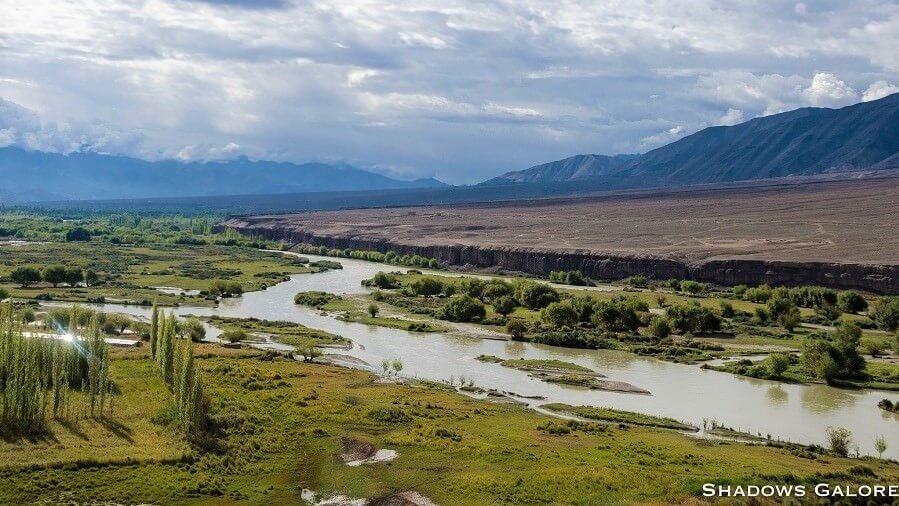
First glimpse of the river Indus, just outside Leh
Magnetic Hill
The Magnetic Hill is easily noticeably by a group of tourists always present at a site in the middle of nowhere, clicking selfies in amusing poses. As per the tour guides and local drivers, if one stops a car at some lines faintly painted on the road, the car starts rolling up the slope on its own, allegedly drawn by the magnetic forces of the hill which is supposed to be rich in ferrous minerals. Well, even though all of it is just an optical illusion, it is entertaining nonetheless.
The confluence of Indus and Zanskar
Heading west out of Leh, we connected with the Indus river quickly and were soon driving parallel to it on the highway. It is always a delight to see this legendary river and in Ladakh, it is difficult to imagine that its modest muddy waters have given rise to one of the most important civilizations of the world.
About 3 km southwest of the Nimoo village, the turquoise waters of the Zanskar river meet the Indus at a confluence that is as dramatic in its landscape as it is beautiful. The light was good and we got down the confluence to take in some fresh air and click quick photographs.
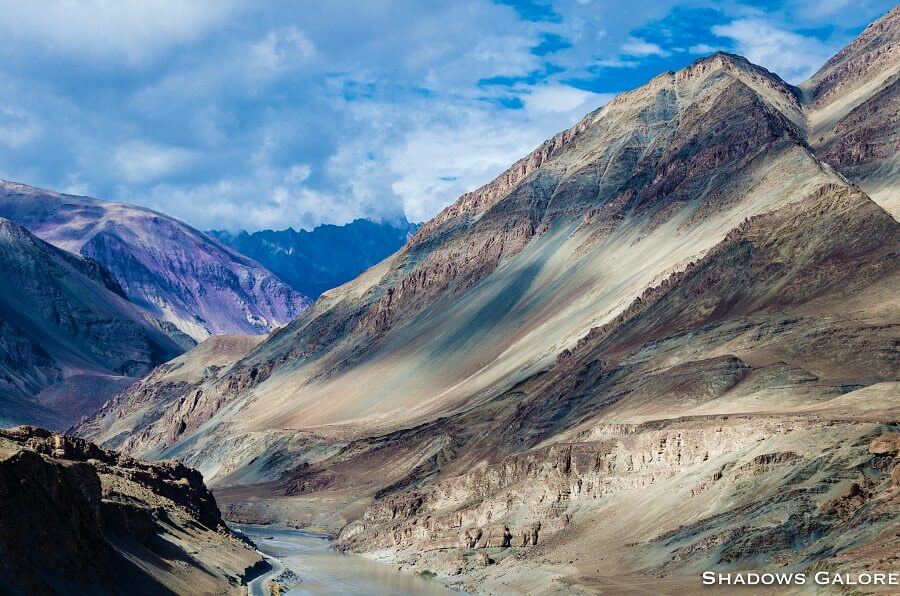
Various hues and colours on the hills towering over the confluence
The route from the Confluence onwards was even more scenic. We travelled on straight roads in the middle of impossibly flat plains flanked by tall hills on both sides, zigzag mountains roads and terrains of the most peculiar kind. For the first outdoor day in Ladakh, it was pretty entertaining!
Enroute, we crossed the village and ruins of Basgo, its crumbling walls visible from a distance. Due to lack of knowledge at that time, we did not stop and explore this place properly, maybe on the next trip. Meanwhile, you can get a better experience of this trip from this video that we have made…
The Travel Video
Alchi Monastery
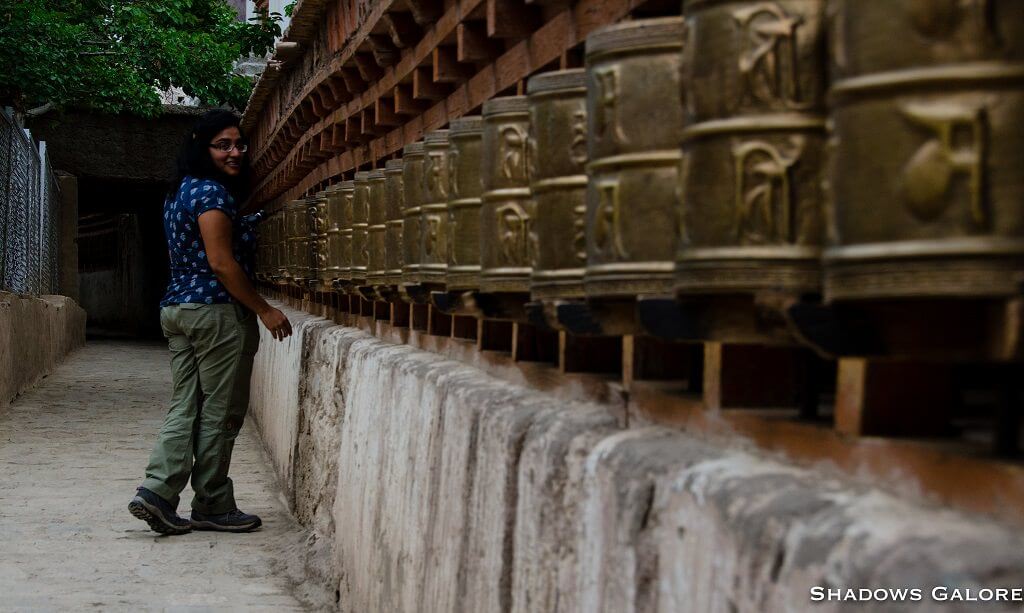
At a distance of 68 km from Leh, the lush green village of Alchi hides in its bosom, the remnants of the great Buddhist renaissance of Ladakh. The ancient Alchi monastery, established around 10th CE, is perhaps the oldest surviving monastery in the region, a testimony to the Second Dissemination of Buddhism ushered in by Tibetan influence.
Like many other monasteries, the Alchi monastery was under the Kadampa order for centuries when the need for better maintenance led to its management being taken over by the Gelukpa order. At present, it is managed by the Likir monastery and is one of the most important gompas in Ladakh.
… as a jewel of colours and forms that is so utterly beautiful that the normal state of breathlessness in this high altitude becomes a deep gasp.
-The Hindu
As you get down from the vehicle and walk along a narrow lane in the beautiful Alchi village to reach the monastery, the small door does not give an inkling of the treasures that lie inside. While the newer part consisting of a prayer hall is nothing special to write home about, the older parts of the monastery complex, the assembly hall, temples and some ruins are a sight to behold. Artists from Kashmir were called to create those intricate carvings that you see in the photos. The most priceless treasure of this Gompa is the wall paintings in each of those shrines that predate most other artwork in Ladakh and is as vivid as it was a thousand year back.
Photography is not allowed inside the shrines to protect the paintings from damage. We took some photographs from outside and then went to the bank of Indus for some leisure time and more photographs.
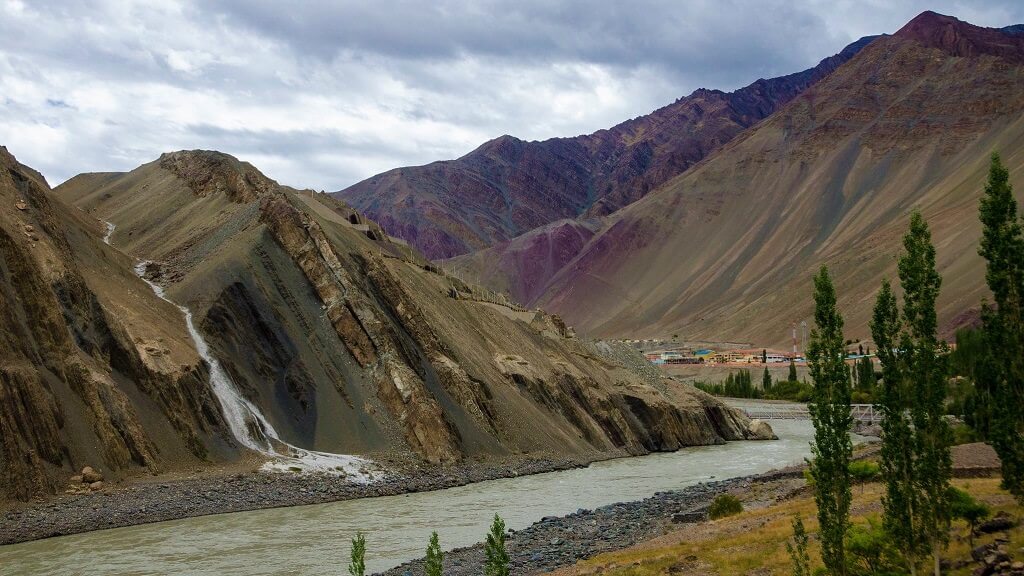
A view of the Indus River behind the Alchi Monastery.
Gurudwara Patthar Saheb
Legends say that Guru Nanak Dev Ji visited this site during one of his travels and it was at this place that the demon (unsuccessfully) tried to kill him by throwing a rock at him – hence the name Patthar Saheb. That stone would not budge when road workers tried to move it during the construction of the highway in the 1970s. One thing led to another and the stone is now enshrined in the form of a Gurudwara, revered by Sikhs, Hindus and Buddhists alike. It is maintained by the Indian army, regiments taking turns to manage it, and has langar that serves delicious meals to anyone who arrives at its doorsteps.
It started getting very windy with some drizzle when we reached Gurudwara Patthar Saheb on our way back from the Alchi Monastery. So while we joined the prayers inside the sanctum, our driver Dorje saheb got a chance to take some rest and have lunch at the langar.
War Memorial & Hall Of Fame
It was drizzling when we started from Gurudwara Patthar Saheb and by the time we reached the Leh War Memorial, we had to stand under a shelter for some time to let the rain subside. We then first visited the War Memorial and then took tickets and went to the Hall Of Fame Museum.
The War Memorial has been constructed in the memory of the soldiers who laid down their lives defending the borders of our country in various wars and smaller strifes since 1948. There is an arena full of plaques of those martyrs, people from all corners of their lives who shed their blood to defend our sovereignty. The feel of this place is very sombre, while one feels proud of the brave soldiers, it is difficult not to get extremely sad. What struck me was plaques on one side that do not have a name yet. Freedom extracts a price and more names would appear on those with time.
The Hall of Fame Museum is dedicated to the culture and martial tradition of the region and gives details of great battle tales like that of General Zorawar Singh, Ladakh Scouts and 1962, and the Kargil War. It gives an insight into the harsh conditions under which our soldiers stand guard at the borders and the supreme sacrifices that they have to make when the call comes. One of the most poignant displays of the museum is Captain Vijayant Thapar VC a few days before he was martyred. Try reading it while not getting the vision blurred by tears.
We were to see many more War memorials during this Ladakh trip and this was only the first one. It is always so difficult to stand there and imagine what it must have been like for them and their families…

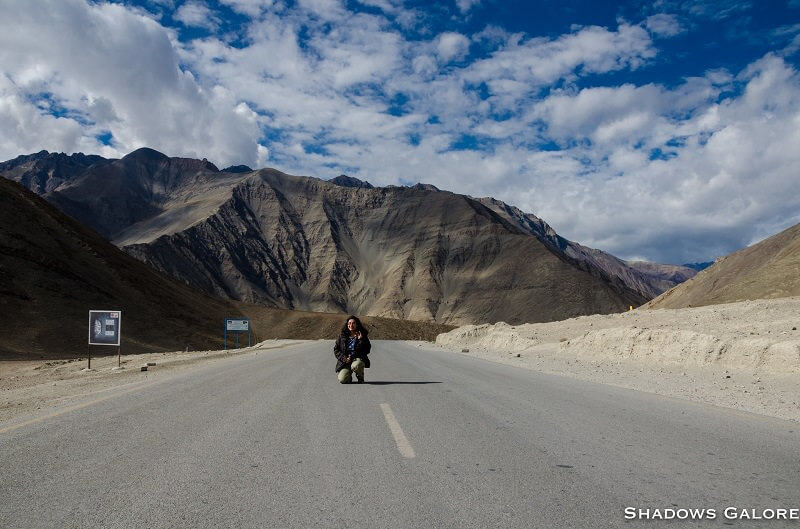
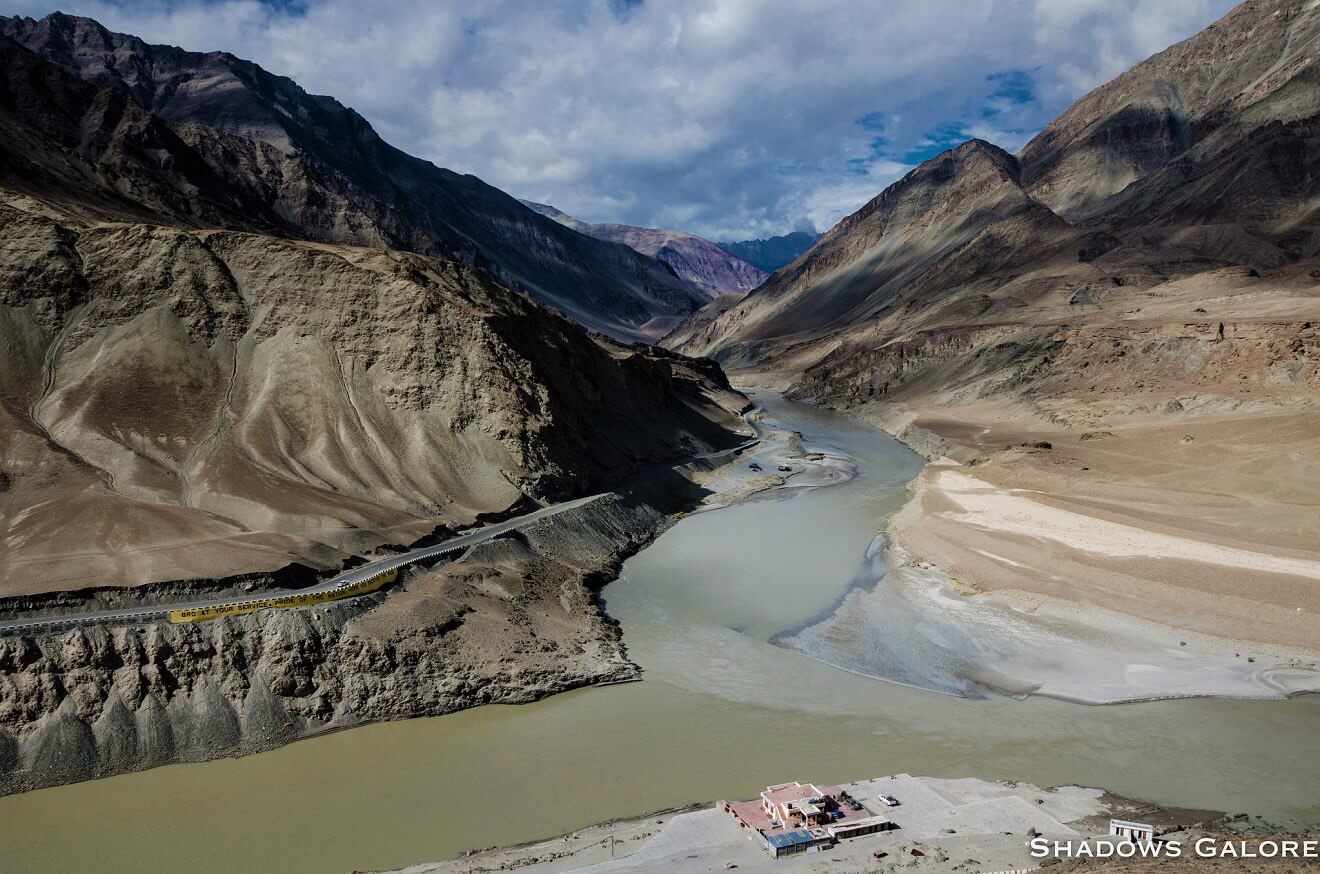
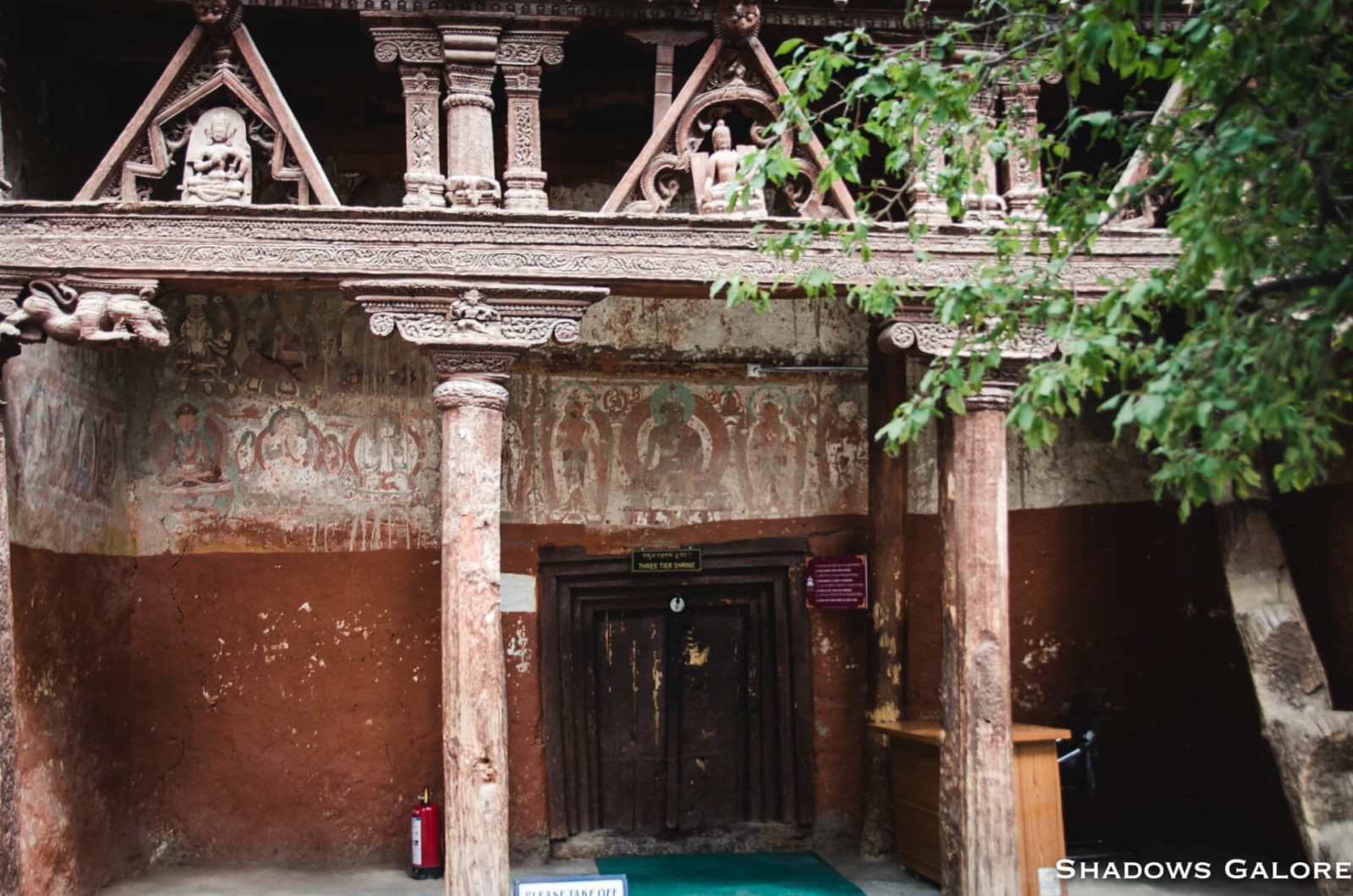
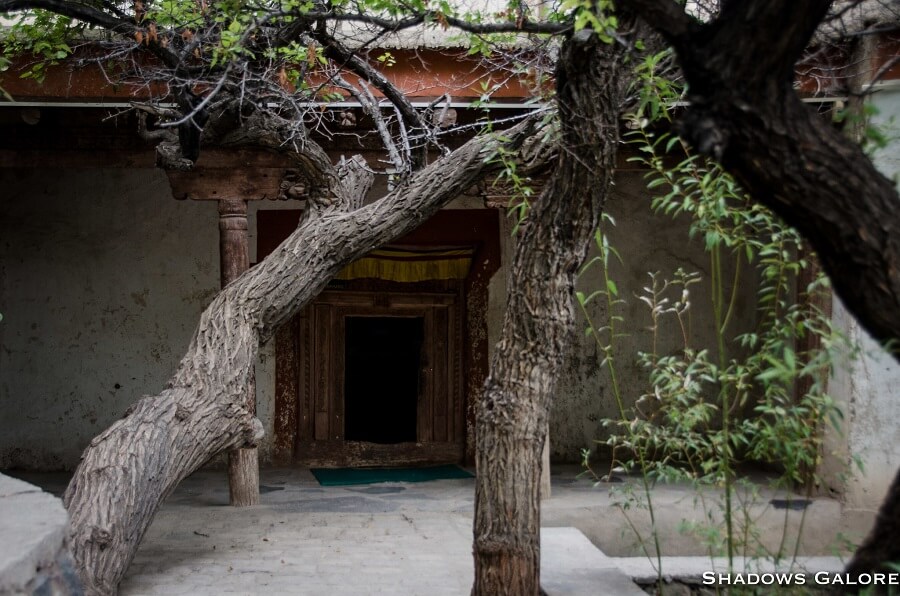
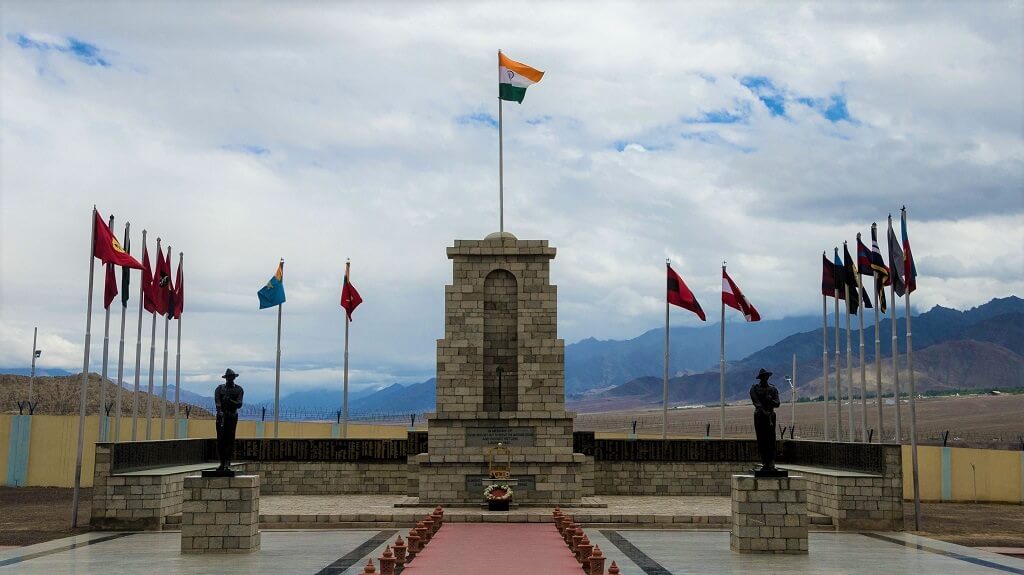
your blogs are the place is worth visiting and your blogs are just mesmerizing